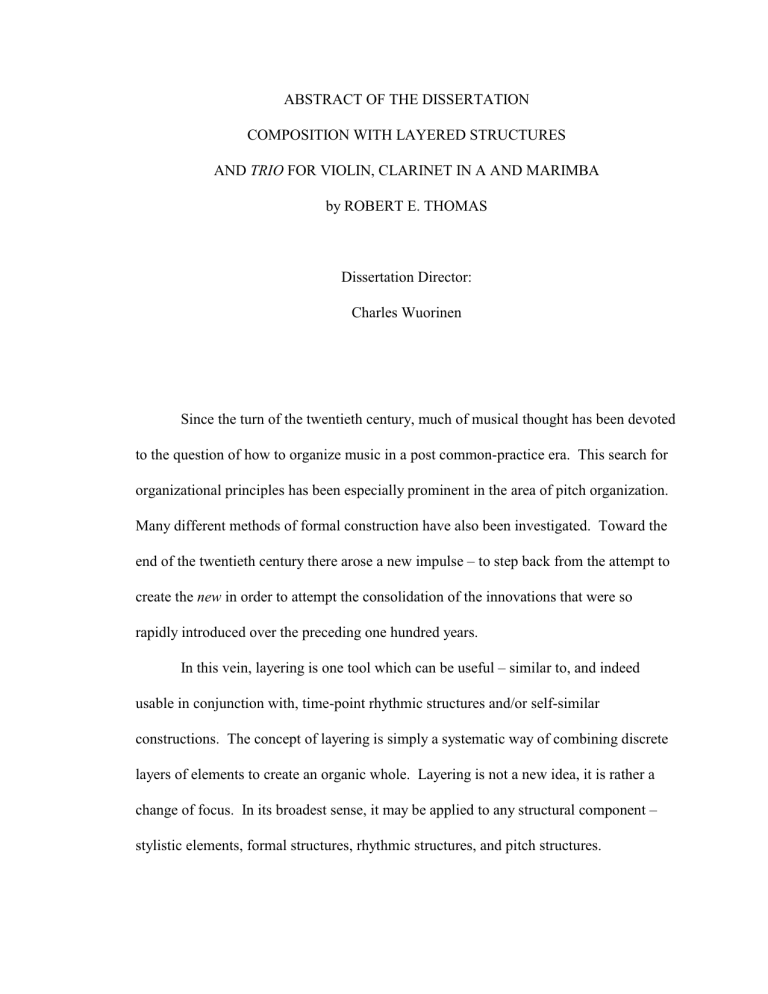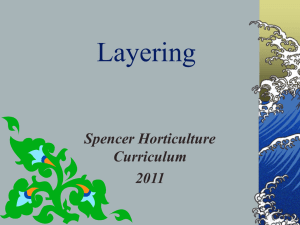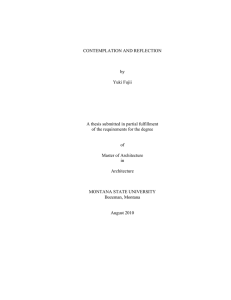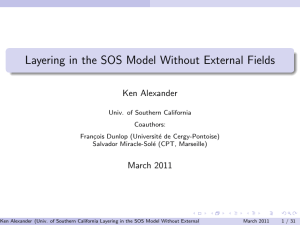ABSTRACT OF THE DISSERTATION COMPOSITION WITH LAYERED STRUCTURES TRIO by ROBERT E. THOMAS

ABSTRACT OF THE DISSERTATION
COMPOSITION WITH LAYERED STRUCTURES
AND TRIO FOR VIOLIN, CLARINET IN A AND MARIMBA by ROBERT E. THOMAS
Dissertation Director:
Charles Wuorinen
Since the turn of the twentieth century, much of musical thought has been devoted to the question of how to organize music in a post common-practice era. This search for organizational principles has been especially prominent in the area of pitch organization.
Many different methods of formal construction have also been investigated. Toward the end of the twentieth century there arose a new impulse – to step back from the attempt to create the new in order to attempt the consolidation of the innovations that were so rapidly introduced over the preceding one hundred years.
In this vein, layering is one tool which can be useful – similar to, and indeed usable in conjunction with, time-point rhythmic structures and/or self-similar constructions. The concept of layering is simply a systematic way of combining discrete layers of elements to create an organic whole. Layering is not a new idea, it is rather a change of focus. In its broadest sense, it may be applied to any structural component – stylistic elements, formal structures, rhythmic structures, and pitch structures.
Charles Ives, Alfred Schnittke, Igor Stravinsky, Elliott Carter, and Milton Babbitt have all provided models for layering musical elements in their music. These strategies have provided an influential resource in many of the author's compositions. In particular, elements of Babbitt's pitch language and a Stravinskian formal conception appear in his
Trio for Violin, Clarinet in A, and Marimba.




